

Table of contents
- Protect birds in the feeder from cats
- Secure birdhouses and make them inaccessible to cats
- Birds in the feeder help to notice approaching cats in good time
- Protect nest boxes from cats
- nest boxes on trees
- nest boxes on hedges
- The Cat Defense Belt
- Discourage domestic cats from hunting birds
- The kitty bell
Birdhouses and nesting boxes in the garden make it easier for birds to find food and a breeding place. But many gardens are not only a bird paradise, but also a cat territory. Although cats in our latitudes have been around for approx. Kept as pets for over 900 years, they still possess the hunting instincts of wild predators. Birds are popular prey for cats, so they need to be protected from you. Here's what you can do to prevent cats from reaching the birds in the aviary or nest box.
Protect birds in the feeder from cats
In order for birds to feel safe taking grain from a backyard aviary, birders strive to ensure that the feeding station is out of the reach of cats. If that's not 100 percent possible, then at least they want to ensure that the birds have a good chance of noticing approaching cats in time to keep themselves safe bring.
Secure birdhouses and make them inaccessible to cats
Cats are very agile, can climb well and easily overcome a height difference of 2 meters when jumping. Birds that are foraging for food can still be protected from them by taking the following measures:
- Place the birdhouse over six feet high on a pole or secure it in a tree and use a ladder to feed
- It is best to use a smooth metal or plastic rod as a post.
- If the surface of the stand gives the cat a grip, or if the bird house is in a tree, a cat deterrent belt can prevent the cat from climbing up.
- Wrapping long spiky blackberry tendrils around poles and logs can also discourage cats from climbing.
- A smooth plastic or metal cuff wrapped around the bark, which is about 80 centimeters wide, can also hardly be overcome by a cat.
Tip:
If you don't have your own cats, but cats from the neighborhood are making the garden unsafe, there are higher ones Building windows or higher balconies that strange cats cannot reach from inside are safe places for a birdhouse. However, it is assumed that there are no trellises or other climbing aids for cats on the house wall.
Birds in the feeder help to notice approaching cats in good time
Cats like to use the cover of a bush to sneak up on birdhouses. For this reason, bird feeders and bird baths, which otherwise do not provide sufficient protection from cats, should be set up far away from bushes. Anyone who does not set up a bird house or bird bath at a height of more than two meters, but on a free one Placed on the lawn, birds still provide valuable help in this way to protect themselves from cats can.
The bird bath or bird feeder should be at least 2 meters away from the nearest bushes. This forces the cat to approach the feeding station without cover. Birds have the chance to see the attacker early enough to be able to fly away in time.
Protect nest boxes from cats
Unlike birdhouses, nesting boxes are usually not placed on open lawns, but are located near bushes or attached to trees. Their branches support young birds in their first attempts to fly. In addition, bird parents do not have to go very far from the nest box to look for food, because they will find it more lice, flying insects and caterpillars on the leaves and flowers of trees and bushes than on a mowed one Lawn.
While some ways of protecting birds from cats at nest boxes differ from those at birdhouses, others are identical. Unlike birdhouses, nesting boxes can be protected from the entrance hole by a porch. Thoughtfully designed, it can prevent cats' paws from accessing the nesting box dwellers. It should be noted, however, that the porch must not prevent the birds from feeding their young.
If you want to do without a porch, you can ensure that the nest inside the nesting box is so far below the entrance hole that a cat with a paw stuck through it cannot reach it can. To ensure this, it is often enough to always remove old nests from the box so that the new nest is not built over it and is higher.
nest boxes on trees
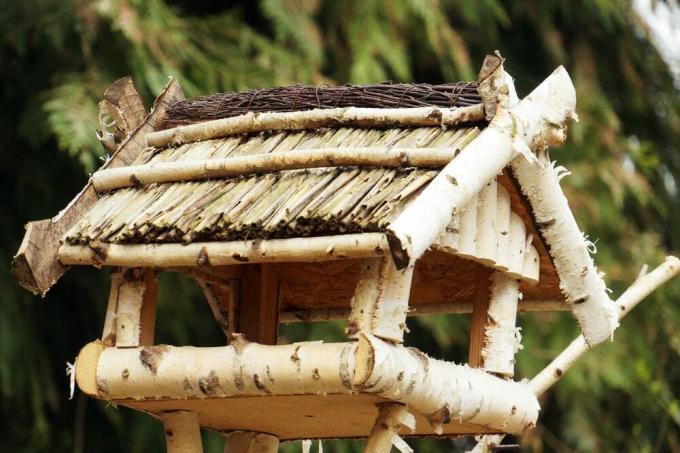
Nesting boxes attached to the branches or trunk of trees can be protected like birdhouses with special cat repellent belts, which are available in specialist shops. In addition, the following self-made aids make it difficult for cats to access the nest box via the trunk:
- Man-high lumber tied around the tree from thorny shrubs with branch ends pointing downwards
- a smooth sleeve made of wood or plastic placed around the tree, starting at about 2 meters in height and about 80 centimeters wide
nest boxes on hedges
If there are birds nesting in or near hedges, the shrubbery can be arranged in such a way that cats cannot enter it, but the birds have good hiding and foraging opportunities. Planting the following shrubs turns a bush or hedge into a prickly, impenetrable thicket that cats avoid.
- Hawthorn (Crataegus)
- Sea Buckthorn (Hippophae rhamnoides)
- Sloe (Prunus spinosa)
- Euonymus europaeus
- Hedge rose (Rosa corymbifera),
- Dog rose (Rosa canina)
- Dogwood (Cornus)
- Bramble (Rubus)
Tip:
Although cats are typical carnivores, they sometimes chew plant parts as well. However, some plants are poisonous to cats, including ivy. Because of this, some cats instinctively avoid nest boxes and aviary surrounded by ivy vines. This is where an attempt comes in.
A household remedy to keep cats away from nesting boxes on bushes are non-toxic plants whose smells the four-legged friends do not like.
These include
- Lavender (Lavandula angustifolia)
- Rue (Ruta graveolens)
- Cranesbill (Geranium macrorrhizum)
- Italian Helichrysum (Helichrysum italicum)
- burning bush (Dictamnus)
- Lemon bush (Aloysia triphylla)
Since every cat has a very individual taste, the effectiveness of the plants can vary greatly. The repelling effect is not the same for all cats.
In general:
The more numerous the plants are present, the stronger the effect. Above all, plants with a citrus smell and plants with a menthol smell are avoided by cats. The animals often look for another hunting ground.
The Cat Defense Belt
A cat repellent belt is considered to be an effective way of protecting birds that use nest boxes or birdhouses in trees from cats. The cat repellent belt consists of individual metal links. On its upper and lower edge are long, outwardly protruding spikes made of metal wire, the tips of which are capped with plastic so that cats do not injure themselves on them.
The size of the belt can be adjusted to the circumference of the trunk by removing individual links. Should the tree grow rapidly and broaden, the limbs can be reinserted to keep the girdle from growing into the bark and trunk. Smaller cat repellent belts for trunk circumferences of up to 70 centimeters and larger cat repellent belts for trees with a trunk circumference of up to 115 centimeters are available from specialist retailers.
The cat belt must be placed around the tree trunk at a height of about 2.5 meters so that cats cannot simply jump over it from the ground.
Very slender and agile cats sometimes manage to squeeze through the metal wire spikes of the cat's belt and climb the trunk despite the barrier. In such cases, the following countermeasures can prevent the cats from overcoming the cat belt.
- funnel-shaped wrapping of the belt with rabbit wire
- Connect the thorns with floral wire
- tie thin branches between the thorns
- Tie fir branches between the thorns
- Braid blackberry tendrils between the individual thorns
- Slide the pond liner between the two rows of spikes
- place a fine wire mesh over the thorns
Discourage domestic cats from hunting birds
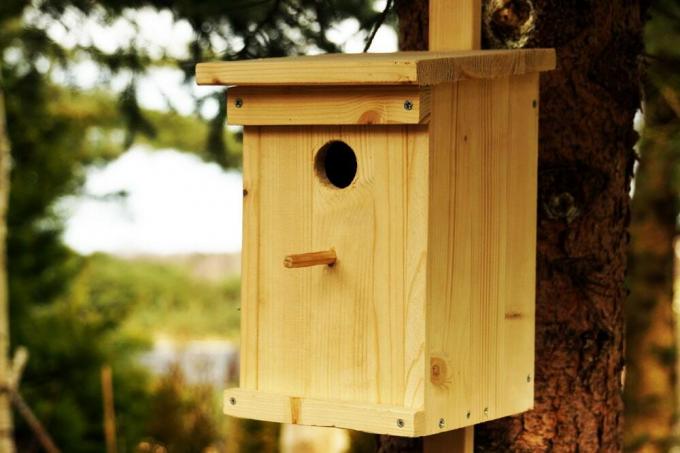
A cat can hardly be weaned from hunting. Even if she is fed regularly, she still wants to satisfy her natural hunting instinct. However, a full house cat does not eat all of its prey. Sometimes she just lives out her play instinct.
Provide variety and movement
Since it is not important for the house cat what the prey is, it can be lost when the cat is taken away from the hunt wants to deter birds, be helpful to play with her and snap at a ball of yarn, for example permit. The cat will grab anything that moves. When she has satisfied her hunting instinct in the game, her desire to hunt birds in the garden fades away.
keep the cat in the house
Contrary to what is often assumed, house cats do not necessarily have to be outdoors. Indoor cats are just as comfortable and often even healthier. If you keep an indoor cat, you don't have to worry about the birds outside in the garden. Since young birds are not yet able to defend themselves against hunting cats, house cats should be housed at least during the months April, May and June stay indoors, because this is when young birds often want to try their first flights company.
The kitty bell
A cat bell is a small metal bell that is put on the cat using a collar. Its ringing alerts birds to the approaching cat so they can fly away in time.
Advantages
- Cat bells can reduce the number of preyed birds by up to 50 percent.
- For many cats, the bell is not a nuisance.
Whether the cat gets used to the bell well, or feels disturbed by its constant ringing, differs from animal to animal.
Disadvantages
The bells do not protect the helpless offspring that cannot yet fly. Hearing the ringing as a warning is of no use to him. For cats wearing a bell, there is a risk that the collar will get caught somewhere, bruise parts of their body or even strangle themselves.
Tip:
When buying the cat bell, make sure that the collar does not pose any danger to the cat. An elasticated collar is a good choice. The cat may be able to strip this off itself in tricky situations. Bands that open by themselves when there is a lot of tension are also recommended.
In general, it is better to use appropriate measures to effectively entice cats into accessing nesting boxes and aviary than to make life unnecessarily difficult for them. One of the benefits of barriers and unloved plants is that they don't just go against pets kept cats, but also against stray cats and other nest predators such as martens or squirrels works.
 garden editorial
garden editorial I write about everything that interests me in my garden.
Learn more about nest boxes
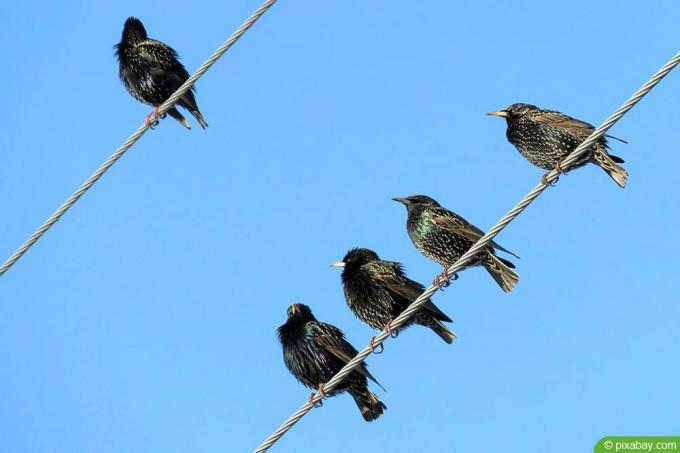
Build a nest box for starlings yourself - instructions
The native bird species, including the starling, are being increasingly crowded out in their habitat. Due to the high level of infrastructure and fewer and fewer nesting opportunities, it is not easy for starlings to look after their young. A nesting box can help here, which you can easily build yourself using the instructions.

Blackbird - profile, food and help in winter
If you can hear a rustling in the leaves or a beautiful bird song in the garden, then in most cases it is a blackbird. While the bird used to be shy and secluded in forests, it has become more accustomed to close proximity to houses and even nests there.
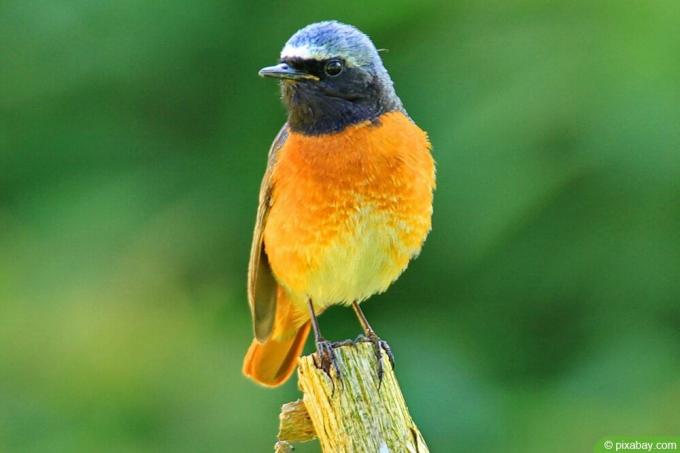
Redstart - build a wanted poster and a nest box
In the past, the redstart was thought to be the summer variant of the robin. Today, many people no longer know the colorful bird. This is because it is rarely found in our gardens. To stimulate much-needed help for the bird, the Redstart was voted 'Bird of the Year 2011'.

Hanging up nest boxes: direction for tits, star boxes & Co
Nesting boxes are a welcome support for our native birds, as they find fewer and fewer opportunities to build a safe nest in nature. Here you can find out what is important when hanging up a nesting box and the importance of the cardinal direction.
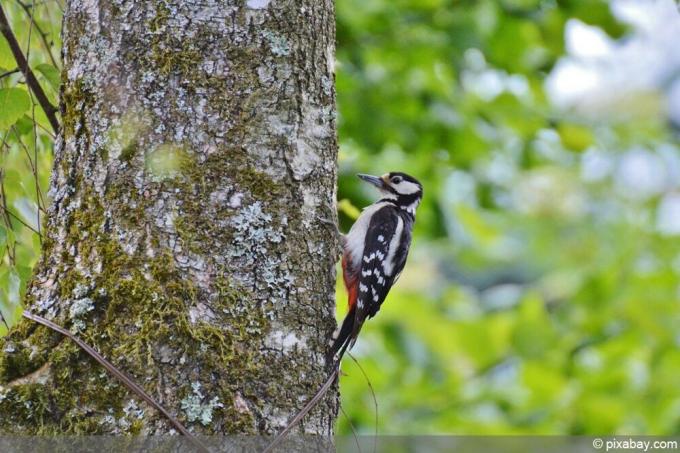
Build a woodpecker hole: free building instructions for a woodpecker nest box
Long gone are the days when birds could easily find their nesting sites in hedges or dead wood. This is especially true for cave breeders like the woodpecker. Whoever wants to do something good for him builds a nesting box for him. As this is explained here.
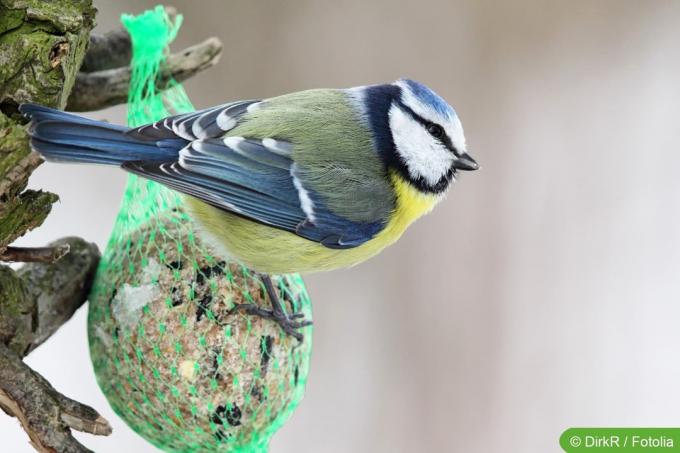
Blue tit - profile, way of life and nesting box tips
Blue tits start looking for suitable nesting sites as early as February. They start building their nest relatively early, usually in March or at the latest in April. The birds gladly accept the nest boxes that are hung up for them everywhere. They could also breed in natural tree cavities, but there is a lot of competition there. How can you support them as a hobby gardener?

